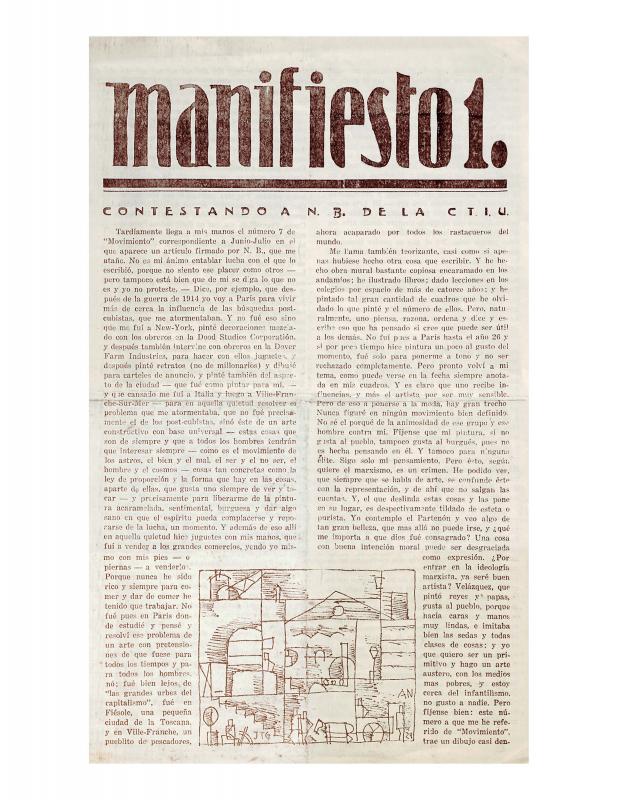This article is a nearly caricaturish expression of what, in the forties, came to be called the “critical generation” (a term coined by Ángel Rama) of Uruguayan writers, artists, and essayists. That generation deemed “the core” of local intellectual traditions responsible for what was seen as contemptible backwardness and provincialism. According to that view, such backwardness meant that there was no movement of thinkers open to the new cultural currents that began to take hold internationally after World War I. That “inferiority complex,” along with rebelliousness on the part of certain segments of the cultural field, had major consequences in the fifties and sixties. In this Manifiesto 2, Guido Castillo (1922–2011) formulates, in perhaps excessive terms, what is problematic as a national stigma. Furthering an argument previously voiced by Joaquín Torres García (1874–1949), Castillo states that this “lack” of substantial local tradition and constant artistic “faltering,” which means that there is no real groundwork for aesthetic theory, can be an advantage when it comes to trying to forge a new art, an art that emerges from something like virgin terrain. Castillo harshly criticizes Zoma Baitler, a naturalist painter who surprisingly frequented the Taller Torres García (TTG) and admired the master artist who directed it. Castillo in passing praises Francisco Matto, another disciple of Torres García who attended his studio. Early on, Matto, a staunch Constructivist, had studied Henri Matisse’s pictorial universe. Castillo also mentions Eduardo Amézaga and Norberto Berdía, the first of whom was a self-taught artist and the second a former disciple of Argentinean artist Ramón Gómez Cornet; Berdía later adhered to “social realism” and clashed with Torres García in 1934, soon after the latter had returned to Uruguay. In a position in keeping with his discourse, the author deems “true painting” the small works by two participants in the Taller Torres García: Augusto Torres (1913–1992) and Julio Alpuy (1919–2009). While their work may lack the literary quality of Amézaga and Berdía’s painting, they embrace painting as “the artistic fact in and of itself.” [For further reading, see in the ICAA digital archive by Joaquín Torres García “Manifiesto 1. Contestando a N.B.” (doc. no. 1228450)].

